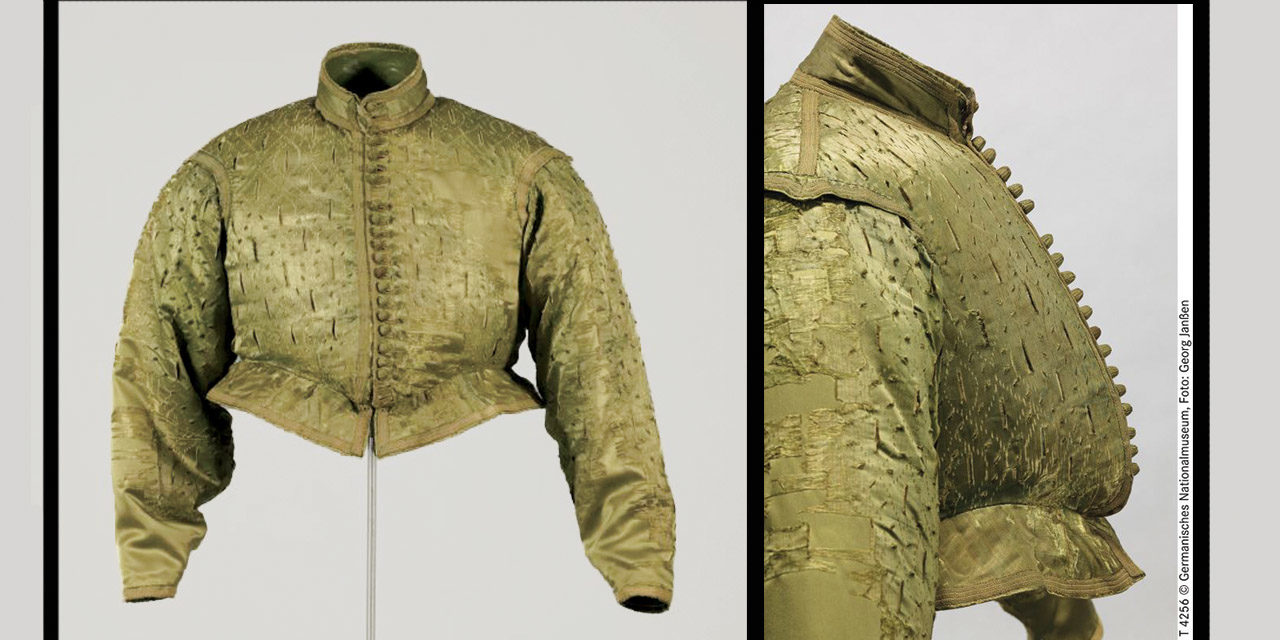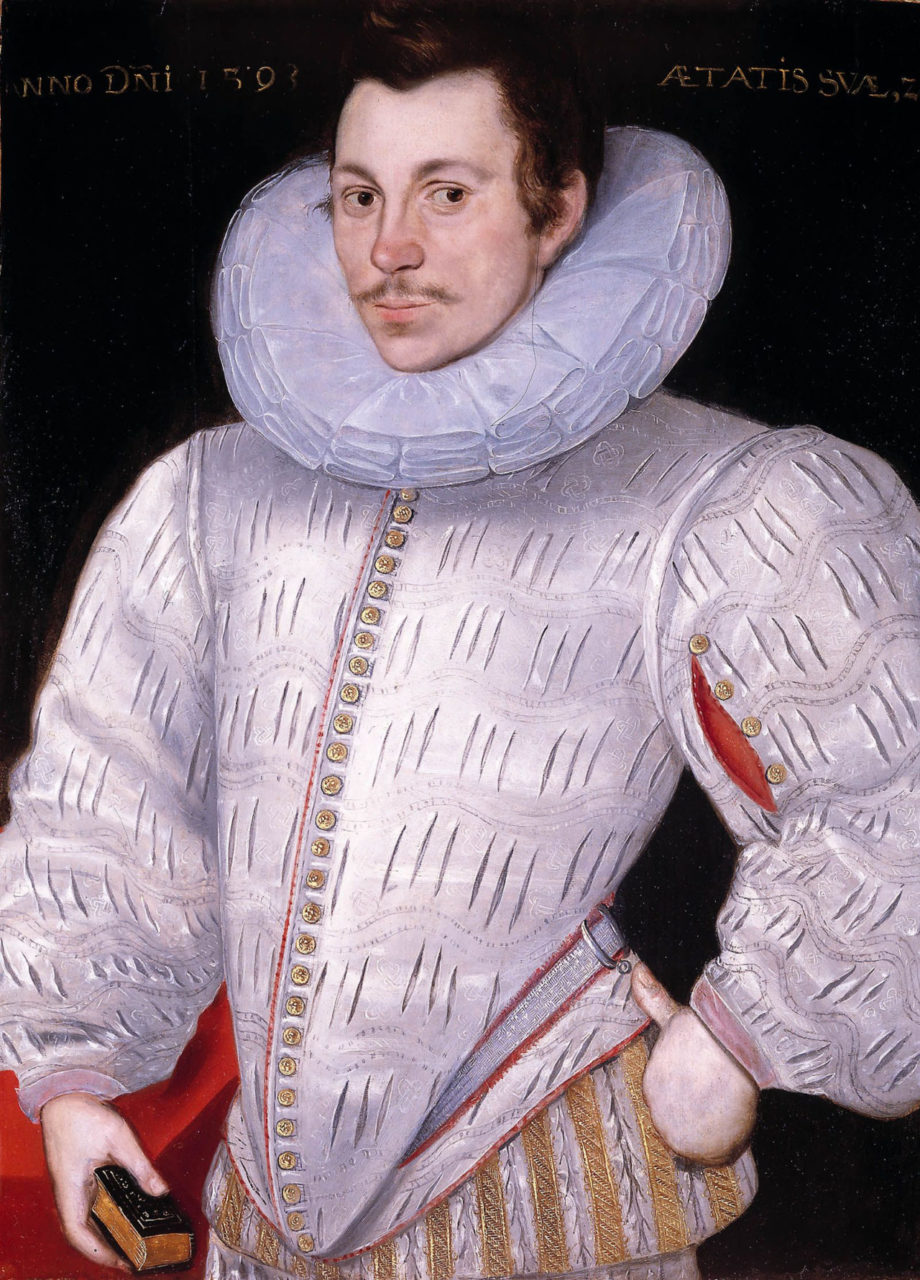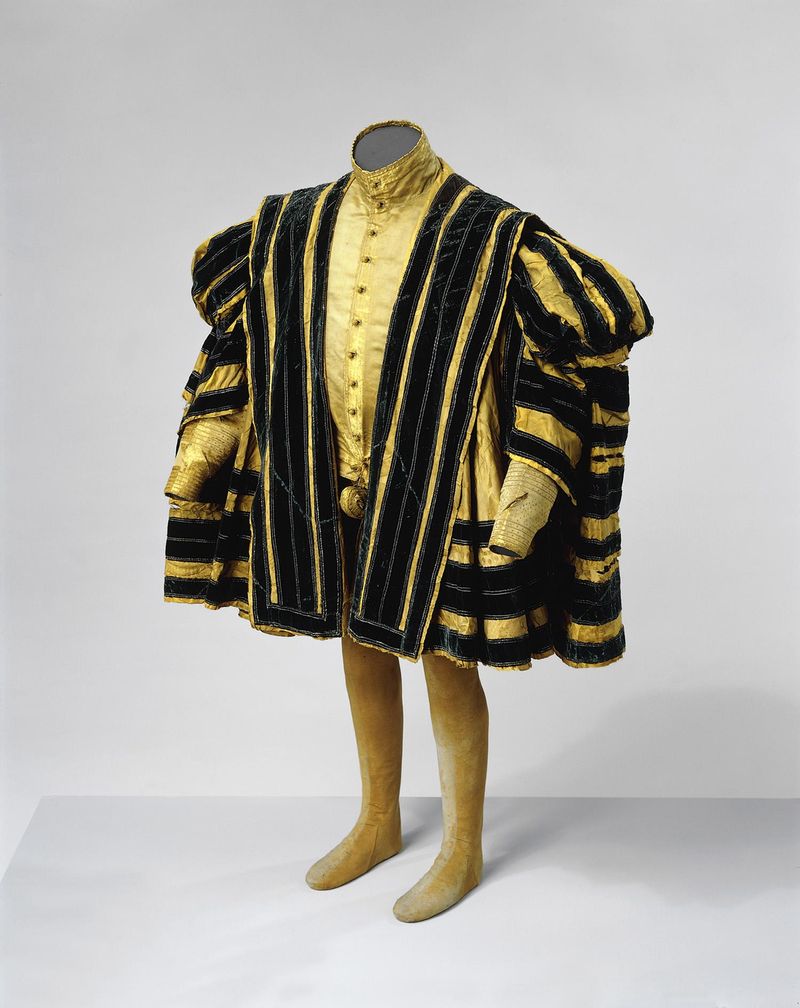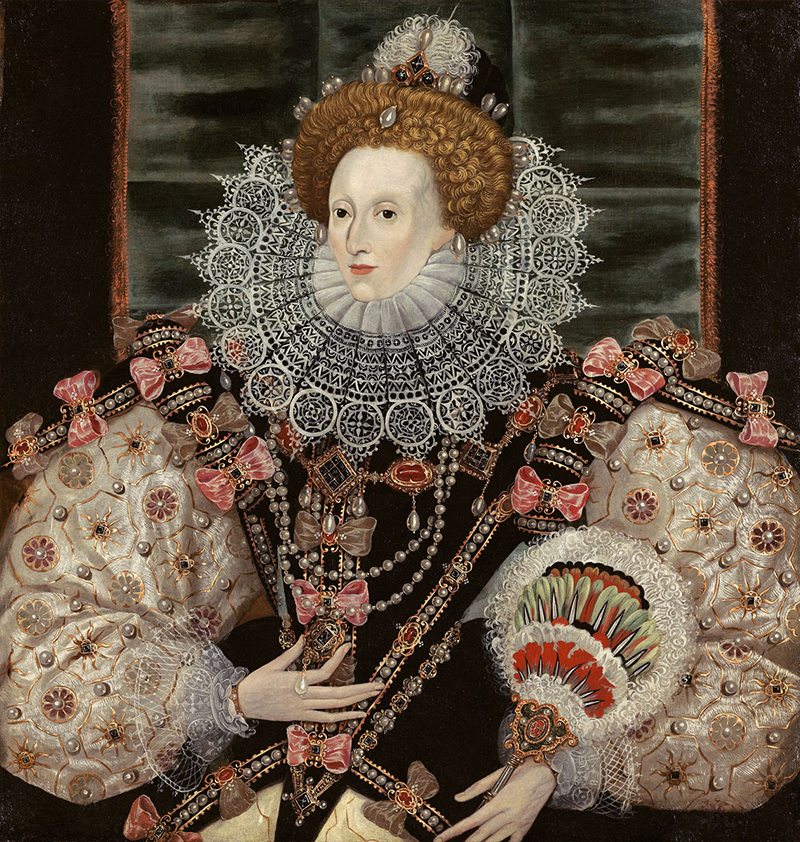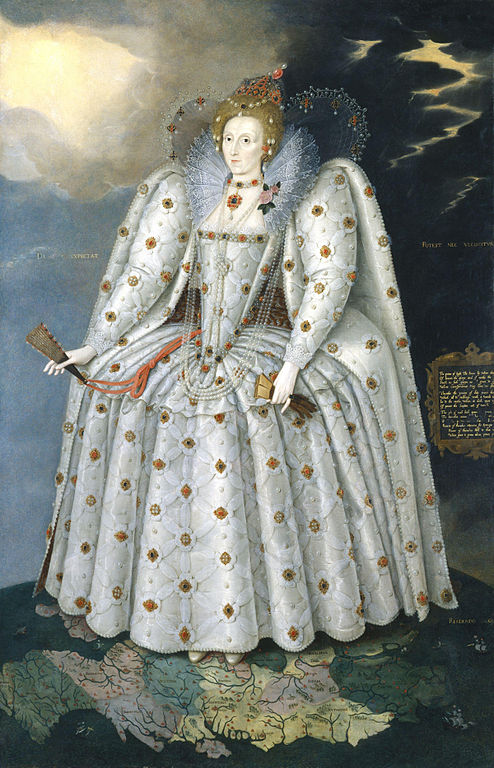The padding used to structure clothing and create fashionable silhouettes in the 16th and 17th centuries.
The Details
E
lite clothing during the Renaissance was full of interesting shapes. At different times, the shoulders, belly, and thighs protruded noticeably, in stark contrast to the fashions of earlier and later years (Fig. 1).
Fashion historians Phyllis Tortora and Keith Eubank succinctly describe bombast in their Survey of Historic Costume (1998):
“A stuffing made of wool, horsehair, short linen fibers called tow, or bran.” (183)
Fashion historian Marybelle Bigelow states in Fashion in History: Apparel in the Western World (1970):
“Horsehair or bombast were also used as breeches padding and in shaping pumpkin breeches (globe-shaped) or venetians (pear-shaped) or trunk hose (balloon or oval-shaped).” (110)
This padding can be seen clearly in the c. 1545 trunkhose of Elector Moritz of Saxony, which bulge out at the thigh underneath the slashed panes (Fig. 2). His matching silk overcoat also utilized bombast in order to keep the enormous shoulders puffed up and in place, and there is undoubtedly subtle padding in the doublet underneath (Fig. 3).
Sarah Hermsen and Sara and Tom Pendergast suggest in Fashion, Costume, and Culture: Clothing, Headwear, Body Decorations, and Footwear through the Ages (2004) that:
“Bombast was absolutely essential to the men’s and women’s clothing of the sixteenth century, yet it was never actually seen. Bombast was a form of stuffing made from cotton, wool, horsehair, or even sawdust. It was used to pad and add shape to a variety of garments, including the shoulders, chest, and stomach of the doublet, a kind of overshirt, and bodice; the bulky legs of men’s hose like pumpkin breeches and Venetians; or the sleeves and shoulders of women’s gowns.”(474)
As these definitions explain, it was used by both men and women in the 16th and 17th centuries. Queen Elizabeth I’s portraits are famous for their exaggerated shoulders and arms; a 1588 portrait (Fig. 4) shows that bombast must have been stuffed throughout her sleeves in order to stay puffed from shoulder to wrist. A later portrait (Fig. 5) demonstrates that even in a few short years, the bombast was relegated mostly to the top of the sleeve, creating a sharp point at the level of her ears and narrowing down to the wrist. This shape would not be possible to maintain without heavy padding.
In A Cultural History of Dress and Fashion in the Renaissance (2017), Maria Hayward explains:
“Late sixteenth- and early seventeenth-century Western clothing incorporated padding and stiffenings to create the distinctive fashionable shapes…Cotton wadding or bombast (bambagio) was used as the padding layer in quilted doublets as well as nightgowns. Other padding materials included sawdust, bran, and horse hair.” (27)
In The Anatomy of Fashion Dressing the Body from the Renaissance to Today (2009), Susan J. Vincent draws on a 1583 source critical of the style:
“[Philip] Stubbes claimed that such doublets were stuffed with ‘foure, fiue or six pound of Bombast at the least’—surely an unlikely figure. He also made the interesting assertion that wearers are so ‘stuffed, bombasted and sewed, as they can verie hardly eyther stoupe downe, or decline them selues to the grounde’, so ‘styffe and sturdy’ do their doublets stand about them.” (“Masculinity Sheathed and Stiffened”)
The garments that Philip Stubbes was complaining about were of the same era as the doublet in figure 6. This example is not as severe a shape as portraiture indicated they could achieve, but we must remember that portraiture was often embellished, and that sources who complained about fashion often exaggerated the aspects that they so disliked. The gentle but protruding peascod shape of the belly on this doublet was fashionable for men and even some women, and may be a typical example of what wealthy people wore in this era.
Lastly, in The Dictionary of Fashion History (2010), Valerie Cumming, C. W. Cunnington, and P. E. Cunnington add to the list of materials used as bombast, stating:
“Padding used to distend garments, especially trunk-hose and sleeves; using horsehair, flock, wool, rags, flax, bran and cotton.” (25)
Tailors may have used whatever materials that they had on hand in order to stiffen and add bulk to garments given that no one was going to see it later.
Fig. 1 - Hieronimo Custodis (British, active 1589-1593). Sir John Ashburnham, 1593. Oil on panel. Denver, CO: Denver Art Museum, TL-17876. Promised Gift of the Berger Collection Educational Trust. Source: DAM
Fig. 2 - Designer unknown (German). Hose des Kurfürsten Moritz von Sachsen (Trunkhose of Elector Moritz of Saxony), 1540-45. Silk. Dresden: Rüstkammer, Staatliche Kunstsammlungen Dresden. Foto: Christoph von Viràg, Abegg-Stiftung Riggisberg, 2008. Source: kostym.cz
Fig. 3 - Designer unknown (German). Prunkkleid des Kurfürsten Moritz von Sachsen, 1540-1545. Silk. Dresden: Rüstkammer SKD. Source: Staatliche Kunstsammlungen Dresden
Fig. 4 - Artist unknown (English). The Armada Portrait of Queen Elizabeth I, ca. 1588. Oil on panel; height: 110.5 cm; width: 125 cm (43.5 x 49.2 in). Greenwich: Royal Museums Greenwich. Source: Wikipedia
Fig. 5 - Marcus Gheeraerts the Younger (Flemish, c. 1561/62-1636). Queen Elizabeth I ('The Ditchley portrait'), ca. 1592. Oil on canvas; 241 x 152 cm (95 x 60 in). London: National Portrait Gallery, NPG 2561. Bequeathed by Harold Lee-Dillon, 17th Viscount Dillon, 1932. Source: The National Portrait Gallery
Fig. 6 - Designer unknown (German). Grünes Wams mit "Gänsbauch" (Green doublet with peascod belly), 1580-1600. Silk satin with slit pattern over silk taffeta, green, front and back wadding, linen lining, silk trims, posony buttons; l. 54 cm. Nuremberg: Germanisches Nationalmuseum, T 4256. Foto: Georg Janßen. Source: GNM
References:
- Bigelow, Marybelle S. Fashion in History: Apparel in the Western World. Minneapolis: Burgess Pub. Co, 1970. http://www.worldcat.org/oclc/910396721.
- Cumming, Valerie, C. W. Cunnington, and P. E. Cunnington. “Bombast.” In The Dictionary of Fashion History, 25. Oxford: Berg Publishers, 2010. Accessed September 12, 2018. https://www.bloomsburyfashioncentral.com/products/berg-fashion-library/dictionary/the-dictionary-of-fashion-history/bombast.
- Hayward, Maria. “Textiles.” In A Cultural History of Dress and Fashion in the Renaissance, edited by Elizabeth Currie. The Cultural Histories Series. London: Bloomsbury Academic, 2017. Accessed November 25, 2019. http://dx.doi.org/10.5040/9781474206419.ch-001.
- Pendergast, Sara, Tom Pendergast, and Sarah Hermsen. Fashion, Costume, and Culture: Clothing, Headwear, Body Decorations, and Footwear through the Ages. Gale Virtual Reference Library. Farmington, MI: Thomson/Gale, 2004. https://libproxy.fitsuny.edu/login?url=http://galenet.galegroup.com/servlet/eBooks?ste=22&docNum=CX3425599999.
- Tortora, Phyllis G., and Keith Eubank. Survey of Historic Costume: A History of Western Dress. 3rd ed. New York: Fairchild Publications, 1998. http://www.worldcat.org/oclc/39154857.
- Vincent, Susan J. “Breasts and Waist.” In The Anatomy of Fashion: Dressing the Body from the Renaissance to Today, 35–60. Oxford: Berg, 2009. Accessed November 26, 2019. http://dx.doi.org/10.2752/9781847888617/ANAOFFASH0003.

